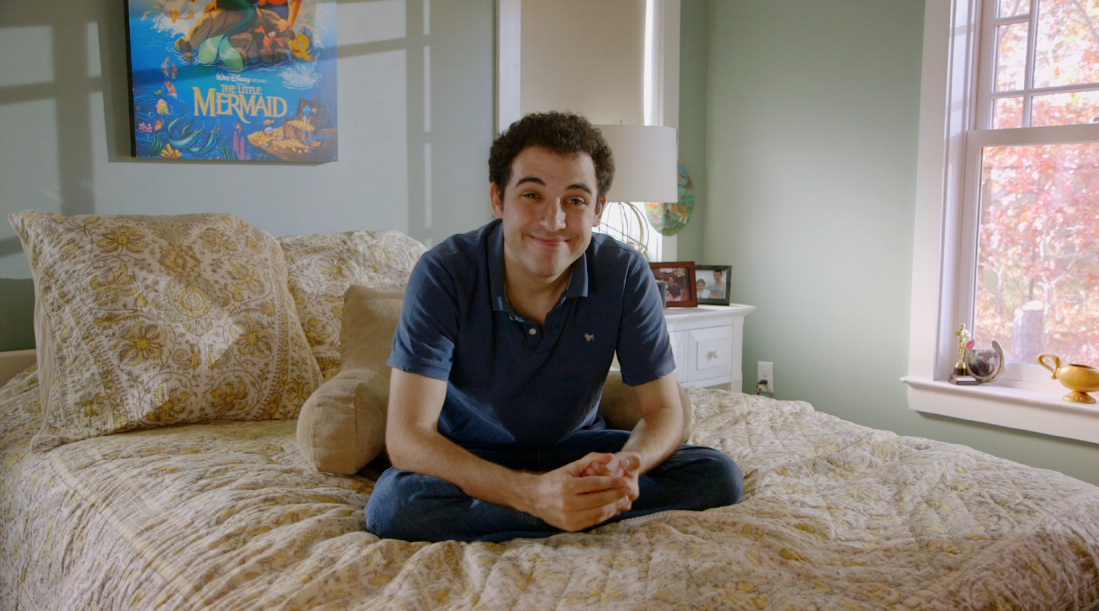If you can watch “Life, Animated” without experiencing at least one throat-constricting, utterly devastating sob, you may want to consider a career as a CIA interrogator.
Everyone else had best bring a hankie or two to this autism-themed documentary.
At the center of Roger Ross Williams’ outstanding film is Owen Suskind, now in his early 20s, who was a perfectly normal little boy until age 3, at which time he began showing signs of profound autism.
His parents, Ron (a Wall Street Journal reporter) and Cornelia were devastated. Their once-bright, verbal and loving son had turned into a silent, solitary creature.
Salvation came — and this is absolutely the truth — in the form of Walt Disney cartoons.
Disney’s animated features were among the few pastimes that engaged young Owen. A breakthrough came when, while watching “The Little Mermaid,” Owen spoke for the first time in years. At first, it sounded like gibberish, but when Ron rewound the tape several times he realized Owen was repeating a line from the movie: “Just your voice.”
Recalls his dad in joy and disbelief: “He’s still in there. He’s still in there.”
Ron utilized a hand puppet of one of Owen’s favorite Disney characters, the villainous parrot Iago (voiced by Gilbert Gottfried) from “Aladdin,” to engage Owen in conversation. Only then did he realize that Owen had memorized every Disney film he’d ever seen and was able to speak using the characters’ dialogue.
“Life, Animated” uses old photographs and home video to tell Owen’s story, augmenting the archival material with new animated sequences (how appropriate), as well as, classic clips from the Disney canon. (Disney, usually fiercely protective of its intellectual properties, appears to have set aside its litigious ways in favor of getting Owen’s story out to the public.)
It took years of custom-tailored therapy for Owen to emerge from the prison of autism. (Says one therapist: “He tries to make sense of the world by fitting it into a Disney script.”) And he’s still not home free.
At age 23, — he looks a bit like the former child actor Fred Savage — Owen’s life is filled with struggle. We see him pacing obsessively, talking to himself in cartoony voices. He has tics and odd gestures.
Yet, he has accomplished so much. Owen has organized a Disney club in the group home where he has been preparing for life on his own. He readily accepts an offer to speak at a French conference on autism and acquits himself with flying colors.
And he’s in love with Emily, a girl with autism. Their relationship is so tender and gentle you wonder if on some level autism isn’t a blessing.
Ron and Cornelia continue to worry about their boy even after he moves into his own apartment and gets a job tearing tickets at a movie theater.
And Owen’s big brother Walt deserves some sort of halo. He knows that he eventually will become the caregiver to both his parents and his sibling. That’ll keep you up at night.
Noting that sex is absent from the Disney universe, Walt cautiously approaches the subject with Owen.
Walt: “When two people kiss they may use more than just their lips. They might use…”
Owen: “Feelings.”
Yep. Absolutely. Feelings.
There are plenty of feelings on display in “Life, Animated,” and they’ll be coursing through the audiences watching this marvelous film.
You’ll leave believing that for all the pain along the way, life is good.









